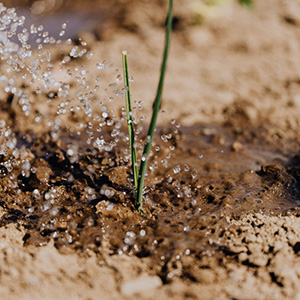Parameter estimation of soil water retention curve with Rao-1 algorithm

All claims expressed in this article are solely those of the authors and do not necessarily represent those of their affiliated organizations, or those of the publisher, the editors and the reviewers. Any product that may be evaluated in this article or claim that may be made by its manufacturer is not guaranteed or endorsed by the publisher.
Authors
The soil water retention curve (SWRC) has a significant role in determining the unsaturated properties of soil. A stochastic optimisation algorithm named Rao-1 algorithm is employed to estimate the parameters of the SWRC model in this paper. The Rao-1 algorithm is a simple heuristic search algorithm containing only addition and multiplication operations. This paper introduces the method and its application in determining soil water retention this model parameters in detail. In this study, the van Genuchten model is used to depict the SWRC for its good fitting capacity, and the van Genuchten model parameters are determined using Rao-1 algorithm. The feasibility and efficiency of the proposed method are validated via the experimental results of 24 soil samples of 12 soil textural classes. Besides, the performance of Rao-1 algorithm is compared with that of salp swarm algorithm, the particle swarm optimization algorithm, differential evolution algorithm, and RETC program. Through comparative analysis, Rao-1 algorithm outperforms other methods in determining SWRC parameters.
How to Cite

This work is licensed under a Creative Commons Attribution-NonCommercial 4.0 International License.














